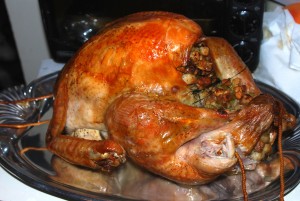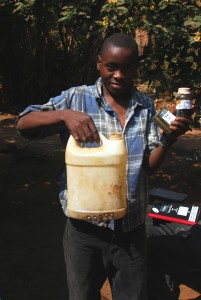by
Mwizenge S. Tembo, Ph. D.
Professor of Sociology
Princess Zindaba Nyirenda, Ta Lakata: The Tears of Africa, New York: Eloquent Books, 2009, 209 pp., 30.00 US Dollars, Hard Cover.
The world has information technology explosion; the internet, the cell phone, texting, twitter, blogs, journals, television, and on-line Newspapers. There are thousands of books being published every day. As I was quickly browsing through the “Acknowledgements” of “Ta – Lakata – Tears of Africa”, something unusual caught my eye. A few italicized words were in a language dear to my heart: “akulu bane-yebo” – my older brother thank you; “mukanilinda yebo” – you escorted me thank you; “Bena Mphamba, munyakeso cha!” – we are Mphamba people, no one else. The italicized language was my mother tongue; the Tumbuka African language from ten thousand miles away from Lundazi in the remote Eastern Province of Zambia in Southern Africa.
Excitement
I was excited; I took a triple take at the cover of the book, and quickly flipped through the pages. What I saw was not only heartwarming but very stunningly familiar. I wanted to tell everyone I met, call my neighbors, my friends, all Americans, Africans, and all Zambians to read the book. This is the story of a woman who grew up about twenty-one miles from my home village. But her adult life is very different. Although we never crossed paths earlier in our lives in Zambia, we share a very common foundation just growing up with some aspects of traditional Zambia. This common foundation may be true for and shared by many Zambian and African women as well as men of her generation.
She was born Princess Zindaba Nyirenda of the royal family of Chief Mphamba of the Tumbuka people of Lundazi in Zambia. What makes her story riveting and keeps you turning pages is how she immigrated to the United States at the age of 21 in 1985. She accompanied her husband with their children but experienced unpredictable pain of separation and suffering with her whole family being ten thousand miles away back in Zambia in Africa. The most devastating is when dozens of her siblings, relatives, and former classmates died of HIV/AIDS. Zindaba recalls them as the dreaded midnight calls. She sought solace and comfort in God, prayer, and the Bible during such moments of deep grief.
“Ta –Lakata; The Tears of Africa” is the untold story of the contemporary African who has the long umbilical cord connected to Africa but lives abroad most of her adult life. How does one reconcile the tensions of the abject poverty, death, AIDS orphans, and the suffering that exists in Africa, on the one hand, and the wealth, affluence, and excesses of the Unites States, on the other hand? No wonder Zindaba feels frustrated, disappointed, depressed, and in some cases angry.
Narrative Tone
The urgent-tone narrative of the book is right from the busy multi-tasking contemporary reader who has the cell phone in hand, texts and twits people, eats a hamburger while watching TV: the book reads fast and furious. The book demands not to be put down not even for a few minutes. The title “Ta Lakata” draws on the metaphor of dry leaves falling off the tree, floating away, and falling all over the world. These are the Africans and Zambians who floated away from the homeland tree of Africa but live all over the world today including the United States.
Zindaba shares intimate details about her family growing up in the city and then a rural small sleepy town of Lundazi. Her journey from this small town, to St. Monica’s Girls Catholic School, to University of Zambia, and finally the United States is fascinating because she uses a furious and in some places provocative narrative. Describing childhood in her family, Zindaba says: “The Nyirenda children were known in our town as “tubazungu” (the little white girls), because we spoke a lot of English and led a pro-Western lifestyle, and because in a place that traditionally expects only boys to be leaders, we, the girls, created our own entertainment for the village children.” (p.25)
This reflects the many contractions and conflicts that were inherent in many Africans of many generations perhaps since the 1880s in the classic novel “Things Fall Apart” by the renowned African writer Chinua Achebe. This is the conflict between Western Christian culture and indigenous Tumbuka or African lifestyles. For example, describing her experiences in the village Chinamwali traditional girls initiation ceremony, Zindaba says:
“Here I was, a girl from the city who danced to discotheque music like the songs of Michael Jackson’s “Thriller” and The Commodores, reciting all their lyrics by heart. And the women in the village were beating drums demonstrating and teaching me how to wiggle my waistline. “My God, this child is stiff!” they would exclaim angrily……..After this whole episode, I graduated with mkanda strand of beads adorning my waistline, ……….” (p. 103-104)
Conflicting Influences
Clearly, these powerful conflicting influences are apparent in her entire book.
Zindaba links her personal family tragedy to the last five chapters in which she challenges all readers to day to find a solution to poverty, HIV/AIDS, orphaned children and death in Africa. Zindaba proposes that the heavy contamination of drinking water and pollution by the mining industry chemical waste disposal, unclean drinking water in the entire country, and malaria may be leading to poverty, disease, suffering, and the high death rates in Zambia and Africa. What is the reader going to do? Why is there so much silence among Africans and Zambians about these serious problems especially wide spread deaths from HIV/AIDS?
“This AIDS epidemic is indicative that the land and the air is so polluted, and people are not going to survive until we address the source of this calamity and dilemma in the Southern hemisphere. People are dying, suffering from every single thing and more – a product of careless mining efforts and mess that is man-made, engineered by human hands in the quest of materialism and spreading civilization – and no one is doing anything about it. People are choosing to remain silent, and this silence reigns.” (p. 169)
Is it because of deep shame? She does not spare herself blame for being silent for so long. What is very eerie is that in the very last part of the chapter of the book, she gets another mid-night phone call; her sister had just died of HIV/AIDS.
African Elites
The book is about the elite Africans who were born in the 1960s at the dawn political independence from European colonialism in Africa coming to intellectual maturity. They want to tell their own story and ask the difficult problems of globalization today. The book is passionate and refreshing as it is no longer about how an American reporter, Western technocrat, or International AID worker sees the lives of Africans. We have enough of these books. It is an African herself passionately expressing and narrating her point of view and perhaps the views and experiences of many Zambians and Africans in the Diaspora.
I highly recommend this book for all readers who want to understand what it means to be an African living abroad to day. I especially recommend it for all young and older Zambians and Africans who live in the Diaspora. This book will expose you to a little bit about our history, the role of Christianity and spirituality in our lives, some of the triumphs, joys and nostalgia we enjoy. Zindaba will also expose you to the pain, grief, heart breaks and frustrations we endure every day, and some of the hope, the possible questions and solutions to our lives. The book really expresses the strength and resilience we have always had as Zambians and Africans.






